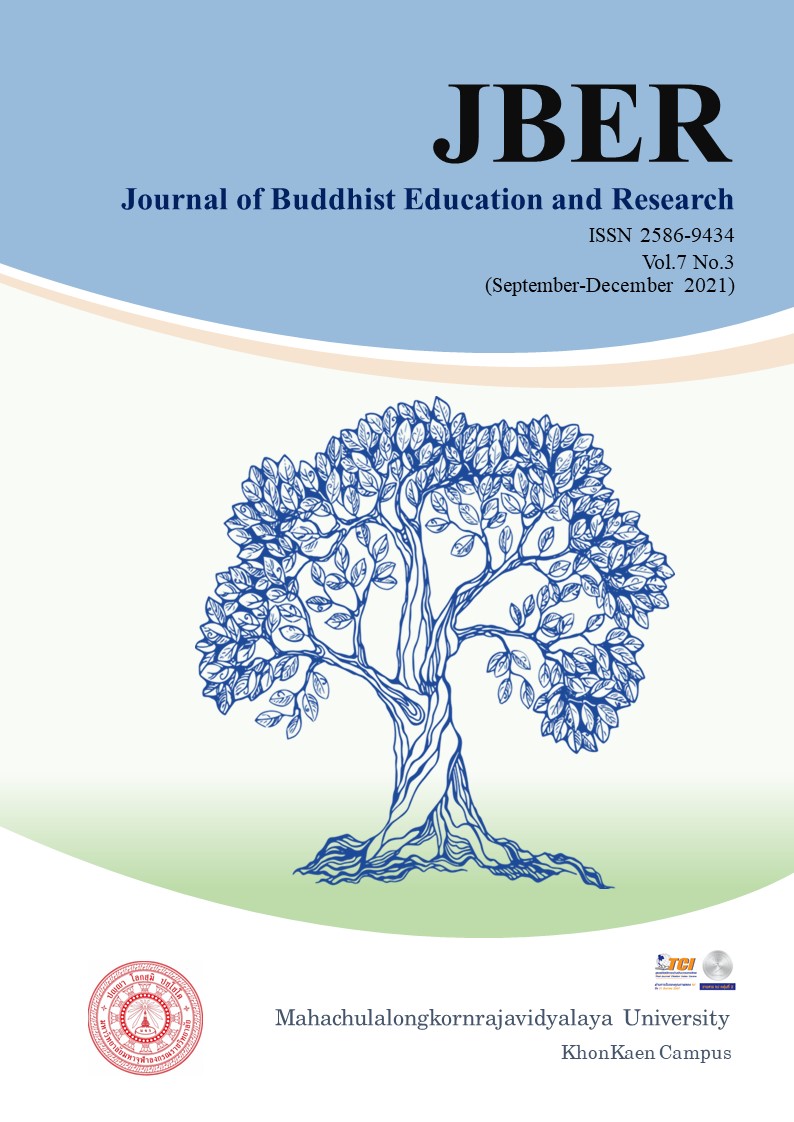FACTORS AFFECTING NON-PERFORMING LOANS (NPLs) OF COMMERCIAL BANKS LISTED ON THE STOCK EXCHANGE OF THAILAND
Keywords:
Non-Performing Loans, Commercial Banks, The Stock Exchange of ThailandAbstract
This research study aimed to study the factors affecting the non-performing loans of commercial banks listed on the Stock Exchange of Thailand. The researcher collected secondary data of 10 commercial banks (excluding Thanachart Bank as it merged with TMB in 2019) listed on the Stock Exchange of Thailand on a quarterly basis from Q1 2016 to Q4 2020, a sum of 5 years 20 quarters totaling 200 data. The data studied consisted of bank-five specific factors including the capital adequacy ratio (CAR), current assets (CA), net interest margin (NIM), loan to deposit ratio (LDR), and growth loan (GL). This research estimations are done using fixed effects regression methods and random effects regression methods because the analyzed data were panel data.
The results of the study found that the factors affecting the non-performing loans of commercial banks listed on the Stock Exchange of Thailand were statistically significant at a positive level of 0.05 were capital adequacy ratio (CAR) and loan to deposit ratio (LDR), While current assets (CA) was a statistically significant negative impact factor of 0.05. Therefore, commercial banks should have more stringent credit approval screening measurements, and place emphasis on current asset management so that the returns and risks are at acceptable levels and meet the needs of business goals clearly. Moreover, banks must operate with prudence to maintain their strength in the ability to attract and retain citizens' deposits which are the lowest-cost source of capital in order to help mitigate the banks' non-performing loan problem.
References
ชลิต ทองดี. และ ภูมิฐาน รังคกูลนุวัฒน์. (2562). “การศึกษาความสัมพันธ์ระหว่างความเสี่ยง สภาพคล่อง และผลตอบแทน ของหลักทรัพย์ที่อยู่ในตลาดหลักทรัพย์แห่งประเทศไทย”. ใน การประชุมนำเสนอผลงานวิจัยบัณฑิตศึกษาระดับชาติ ครั้งที่ 14 ปีการศึกษา 2562. บัณฑิตวิทยาลัย: มหาวิทยาลัยหอการค้าไทย.
ชัชวลัย ใจธีรภาพกุล. (2554). “ปัจจัยที่ส่งผลต่อปริมาณหนี้ที่ไม่ก่อให้เกิดรายได้ (NPL) ของธนาคารพาณิชย์ ในประเทศไทย”. สารนิพนธ์ ศ.ม. (เศรษฐศาสตร์การจัดการ). บัณฑิตวิทยาลัย: มหาวิทยาลัย
ศรีนครินทรวิโรฒ.
นาตยา ภู่มณี. (2556). “การวิเคราะห์เปรียบเทียบอัตราส่วนและความเพียงพอของเงินกองทุนของธนาคารพาณิชย์ไทย”. ปริญญาบริหารธุรกิจมหาบัณฑิต สาขาวิชาการเงิน. บัณฑิตวิทยาลัย: มหาวิทยาลัยหอการค้าไทย.
ปรียานุช กิจรุ่งโรจน์เจริญ (2558). “การบริหารเงินทุนหมุนเวียน”. วารสารสารสนเทศ. 14(2): 1-19
มนตรี พิริยะกุล. (2560). “Panel data analysis”. วารสารรามคำแหง สาขาวิทยาศาสตร์และเทคโนโลยี. 30(2): 41-54.
วิมพ์วิภา ทองรุ่งเกียรติ. (2554). “การศึกษาความสัมพันธ์ระหว่างปัจจัยพื้นฐานทางเศรษฐกิจระดับมหภาค กับปัญหาหนี้เสียสะสมในระบบเศรษฐกิจไทย”. ปริญญาวิทยาศาสตรมหาบัณฑิต (การบริหารการเงิน) บัณฑิตวิทยาลัย: มหาวิทยาลัยธรรมศาสตร์.
ศูนย์วิจัยกสิกรไทย. (2564) “โควิดระบาดระลอกใหม่ หนี้เสียเพิ่มขึ้น-หนี้กระจายตัวหลายธุรกิจ”. สืบค้นจาก https://brandinside.asia/thailand-npl-increasing-after-new-wave-of-covid-19outbreak/. 21 เมษายน 2564.
อมรรัตน์ เจนจัดการ. (2556). “ปัจจัยที่ส่งผลต่อสินเชื่อที่ไม่ก่อให้เกิดรายได้ของธนาคารพาณิชย์ขนาดกลาง”. ปริญญาบริหารธุรกิจมหาบัณฑิต สาขาวิชาการเงิน. บัณฑิตวิทยาลัย : มหาวิทยาลัยหอการค้าไทย.
Barth, J.R., Dopico, L. G., Nolle, D.E., & Wilcox, J. A. (2002). “Bank Safety and Soundness and the Structure of Bank Supervision: A Cross-Country Analysis”. International Review of Finance. 3(3): 163-188.
Berger, A. & DeYoung, R. (1997). “Problem Loans and Cost Efficiency in Commercial Banks”. Journal of Banking and Finance, 21(6): 849-870.
Do, Q. A. and Nguyen, D. (2014). “The determinants of non-performing loans in Vietnam commercial banks”. Vietnam’s Socio-Economic Development–A Social Science Review, 77: 32-45.
Isik, O. and Bolat, S. (2017). “Determinants Of Non-Performing Loans Of Deposit Banks In Turkey”. Journal of Business, Economics and Finance (JBEF). 5(4): 341-350
Louzis, D.P., Vouldis, A.T. and Metaxas, V.L. (2012). “Macroeconomic And Bank-Specific Determinants Of Non-Performing Loans In Greece: A Comparative Study Of Mortgage, Business And Consumer Loan Portfolios”. Journal of Banking & Finance. 36(4): 1012-1027.
Messai, A.S. and Jouini, F. (2013). “Micro and Macro Determinants of Non-performing Loans”. International Journal of Economics and Financial Issues. 3(4): 852-860.
N Radivojevic, J Jovovic (2017). “Examining Of Determinants Of Non-Performing Loans”. Prague Economic Papers. 26(3): 300–316.





